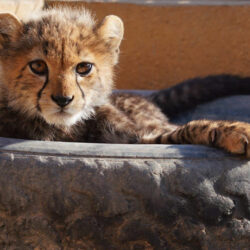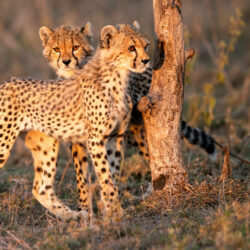A Future for Cheetahs in India
-

- by Dr. Laurie Marker September 28, 2022
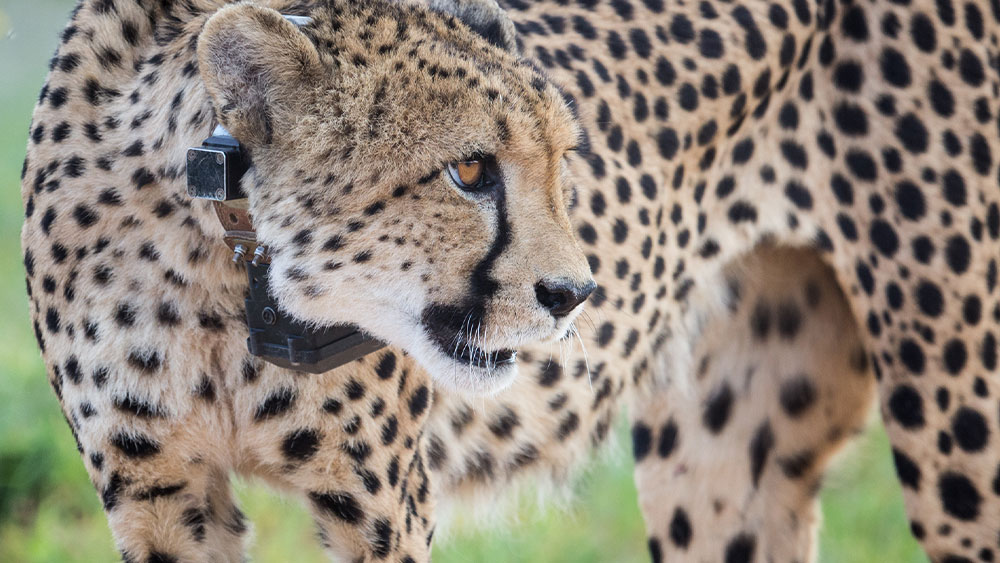
Conservation of species requires global cooperation. For more than 12 years, I have consulted with the government of India and their scientists on how to bring cheetahs back to the landscape. On Friday, September 16th, the project finally came to fruition with the gift from the Government of Namibia of eight cheetahs to India. I was honored to be supervising this historic relocation effort on behalf of Namibia.
We chose three male and five female adult cheetahs (all between two to five-and-a-half-years-old) as the ideal candidates to make the 24-hour, transcontinental journey to India’s Kuno National Park. We conducted an extensive assessment of their health, wild disposition, hunting skills, genetics and reproductive health/potential to ensure their success in India. The cheetahs were all vaccinated, fitted with satellite collars, and kept in quarantine for a month before the journey.


The team who accompanied me included CCF’s veterinarian Dr. Ana Basto and CCF’s cheetah reintroduction specialists Eli Walker and Barth Balli. Also, we were very pleased that India’s High Commissioner to Namibia, Mr. Prashant Agrawal, joined the flight, along with the Shri Vivek Johri, Head of India Customs, Dr. Yadvendradev Jhala, Dean of the Wildlife Institute of India and the main coordinator for Project Cheetah, as well as South African partners, Dr. Adrian Tordiffe veterinary specialist from Ondserstpoort University, and Vincent Van de Merwe, Head of the South African Meta Population program, and of course a great team from India DD TV who filmed the entire trip.
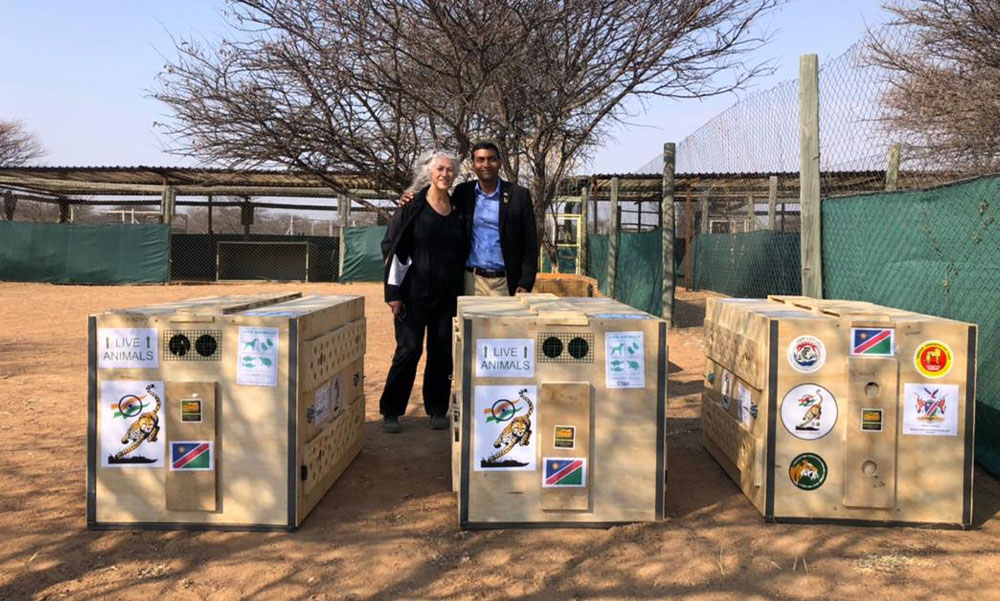
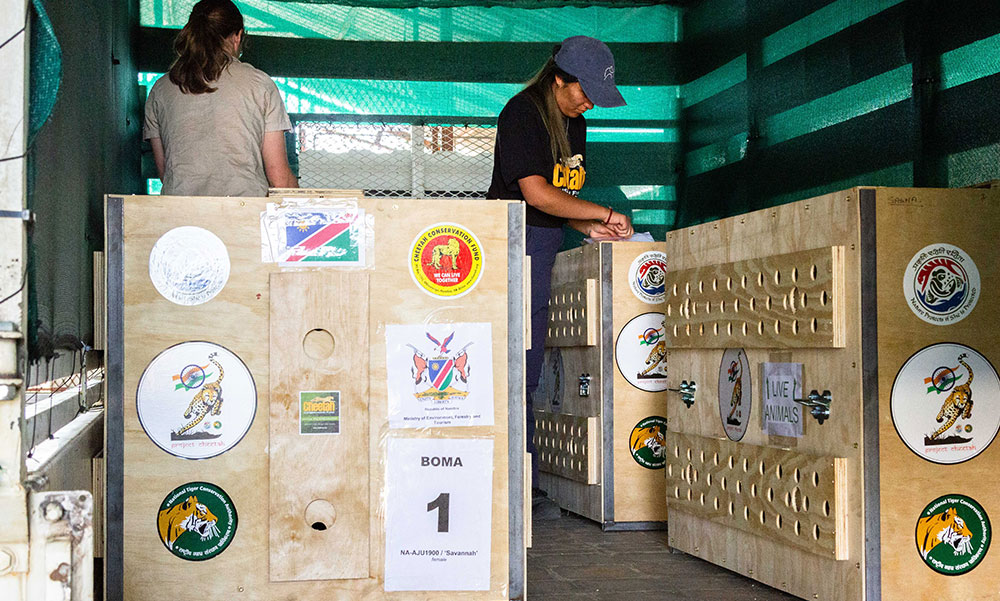
As an Explorers Club fellow, I thought it would be perfect to acknowledge the importance of this historic event by taking Explorers Club Flag number 118 along on the journey. Traveling with us was fellow Explorers Club member Hamish Harding, who facilitated the 747 ‘Tiger’ jet in which we flew. Similar flags have been to the moon, and we thought this event was equally important!
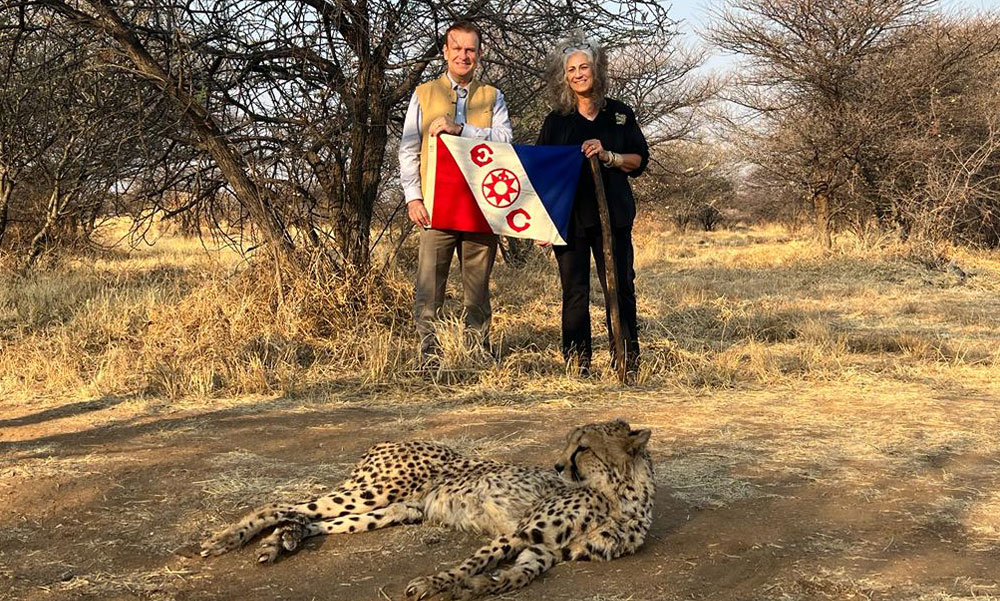
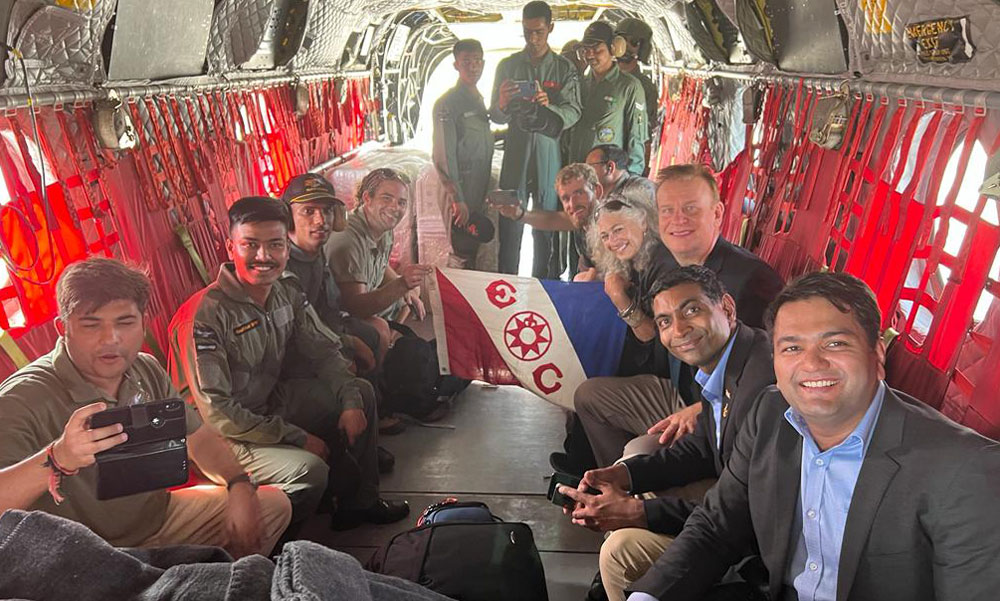
The flight went very smoothly within the jet that was converted specifically for this purpose. The cheetahs rested for the most part, and we were able to monitor them all along the way. During the long overnight flight they did some chirping back and forth to each other, but mainly they slept calmly. The dark transport boxes we use, that are airline approved, are calming to them; it seems to help them to feel safe. We have transported so many cheetahs, and the right transport boxes are key to smooth travels.


Our first stop was Gwalior Air Force base, where the Indian Air Force team was there to help move the cats from the jet and transport them into two smaller helicopters. Four cats in each and two vets to accompany them. That was how we transported the cheetahs to Kuno, a 30 helicopter minute flight. The rest of the team traveled in a larger transport helicopter to Kuno, arriving a few minutes ahead of the cheetahs so we were ready to help unload the cats.
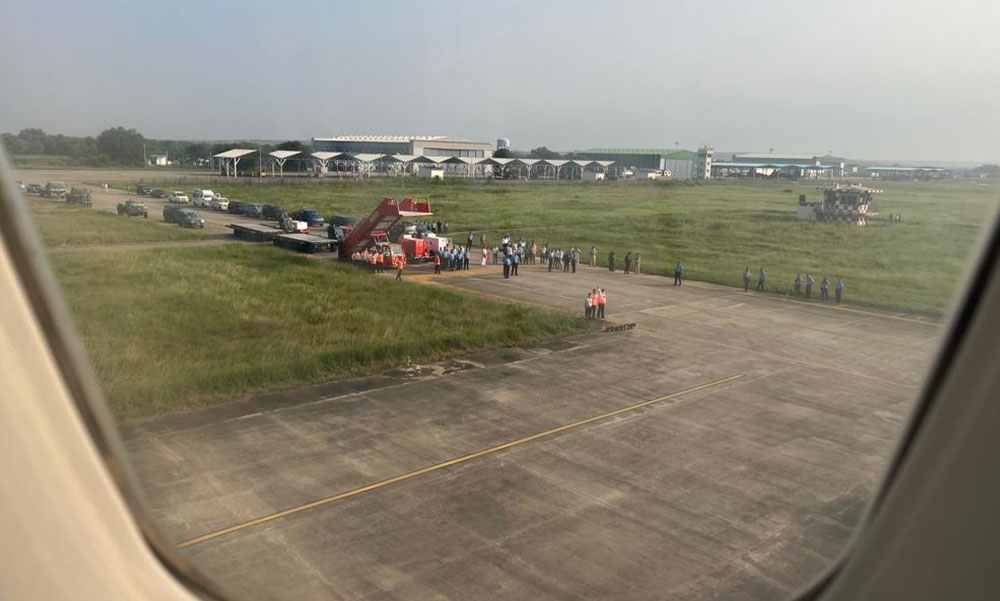
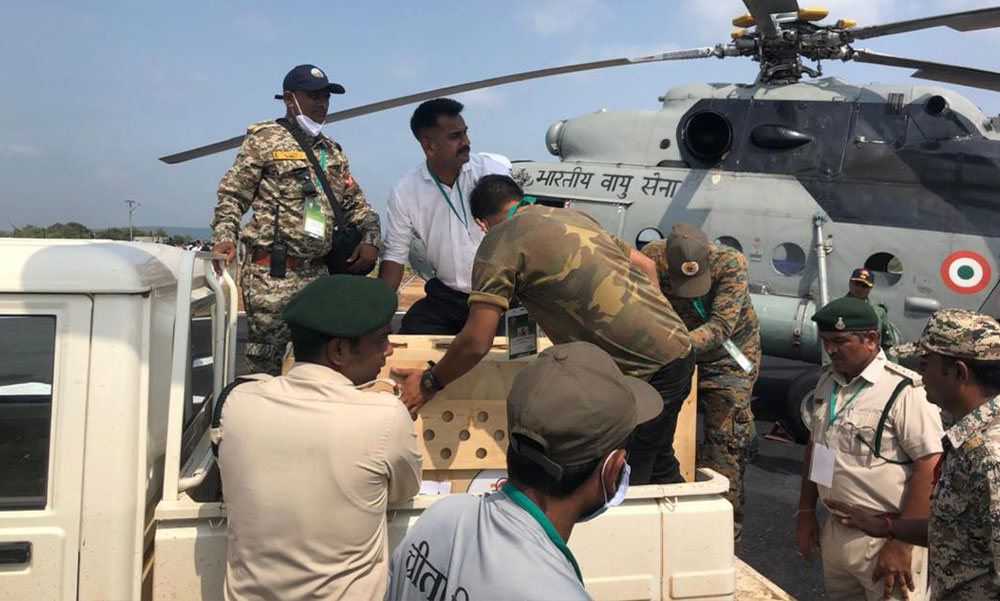
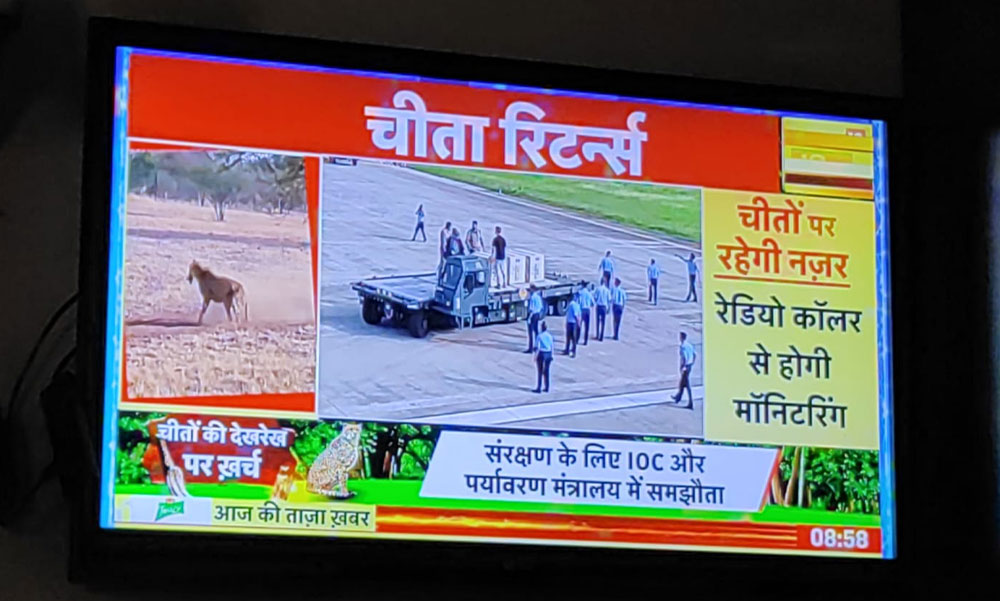
There was an enormous amount of positive energy and excitement from all the people there to greet us, and we met many government officials along the way. Of course, we were welcomed by all who we had been coordinating with for the past few months from Kuno National Park and the National Tiger Authorities. India’s Project Cheetah falls under the supervision of these two organizations. Since my last trip just a few weeks ago, the main ranger station at Kuno had changed a lot. They had built four helicopter pads and many tents were erected for the gathering of VIPs and India’s Prime Minister Narendra Modi, who would be joining us for this very special day.
Once in the park everything seemed to be moving so fast. We moved three of the calmest cheetahs to their areas for release by Prime Minister Modi when he arrived. He was also flying by helicopter. We were not able to be on hand to watch as he released the first three cheetahs into their new enclosure due to security. Once everything was in place and the cheetahs were situated, he opened the door to their travel crates and they were off. The video shown around the world told the whole story, as these first cheetahs touched India soil.
Once the Prime Minister finished with the release ceremony, I got to meet him with the VIP welcoming delegation and officially present the special gift of cheetahs on behalf of the people of Namibia to the people of India. I got to wish the Prime Minister a Happy Birthday too. He then spent time talking with a group of young people, called the “Cheetah Friends”. I had already met them and got to talk with them while waiting for all the activities to get underway. Before departing, the Prime Minister asked to meet the international team who worked to bring the cheetahs to India.
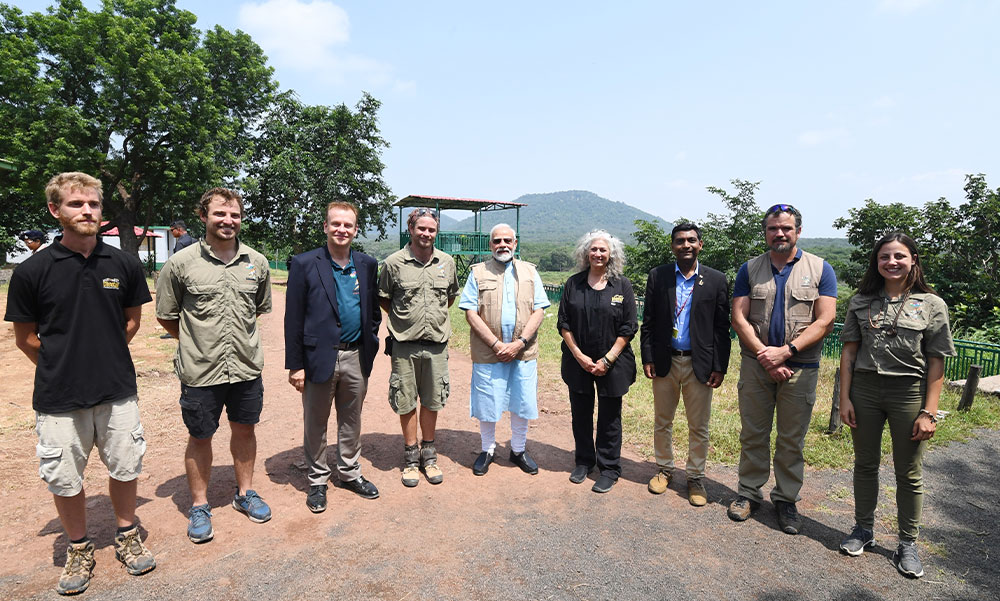

The Prime Minister took his time leaving the park, and we were finally able to move the other five cheetahs to their new holding areas and release them. We had so many eager helpers with us, and it was difficult to explain that the cheetahs we had brought were wild and NOT used to SO many people. It was quite noisy on the back of the trucks and then we hand carried the crates to their final areas for release. I think this may have been the hardest and most stressful part of the trip.
The final release went well, with the cats running around their new holding pens. Fortunately, they had shade cloth around the outside perimeter fence which helped them recognize there was a barrier and see that they could not keep running. After all was done, everyone was rewarded for all their help and hard work with a big celebratory meal in one of the big tents.
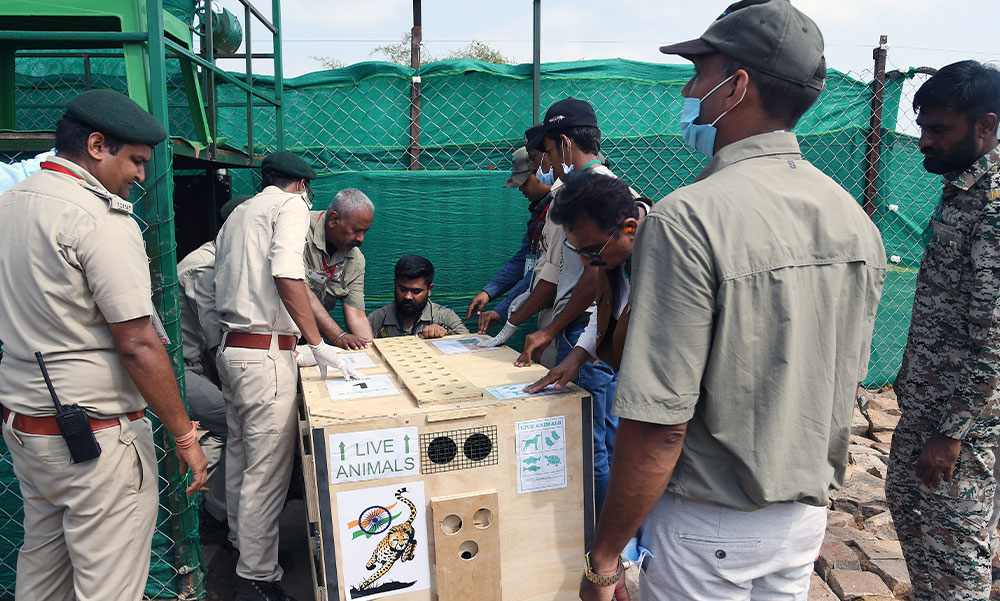
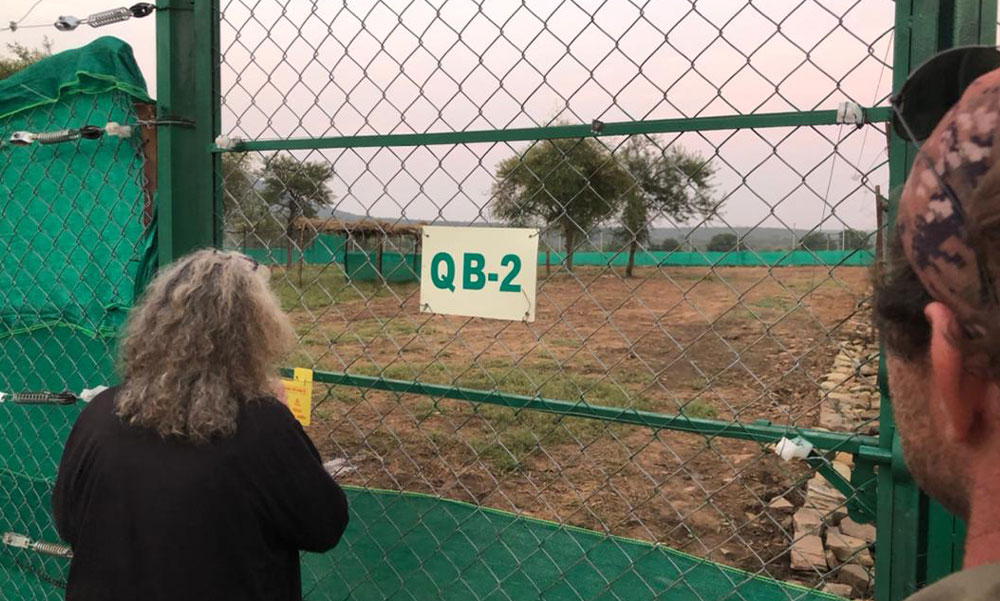
To help the staff at Kuno acclimate the cheetahs, our vet, Ana, along with Eli and Barth remained in India for the next week and Barth will stay on longer to continue monitoring and assisting. Eli will return in a few weeks, as the cats move out of quarantine and into their next soft release 100ha areas.
At 12 years in the making, I anticipated that if we could ever make it to a point where CCF could help facilitate the return of the cheetah to India, it would be a big deal to everyone. I was overwhelmed by the outpouring of support that we received from the public, from news outlets and from the researchers and scientists. I am pleased with how smoothly everything went and grateful for the opportunity to assist the Namibian government, representing the people of Namibia as they gave such a generous gift to the people of India.
Without our many years of research and practice in rehabilitating and releasing cheetahs, this project could not take place. Our involvement in the reintroduction project will continue and evolve over time as we plan for future visits and potential releases.
Related Reading
-
February 1, 2024
Celebrate Valentine’s Day By Helping CCF to Name a Cheetah Cub -
January 4, 2024
Wish a Happy Birthday to Dr. Laurie Marker


